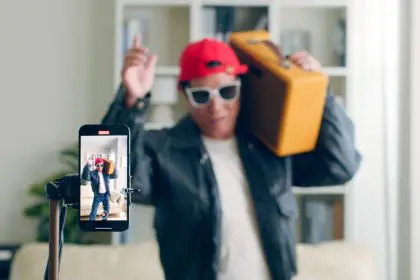
The new naturalization obstacle course
In a bold move that is raising eyebrows and blood pressure across the nation, U.S. Citizenship and Immigration Services (USCIS) has unveiled revolutionary changes to the naturalization process. This revamped system is designed to turn becoming a U.S. citizen into a test of endurance and creativity, insisting that completing a few forms just isn’t challenging enough anymore. The once mundane bureaucratic process has now transformed into an obstacle course that feels more like a reality TV show than a government procedure.
American ninja warrior style
While the traditional requirements such as being 18 years old and maintaining lawful permanent residence still stand, USCIS has introduced a series of “character-building obstacles.” These additions are not only meant to test applicants’ perseverance but also their balance, creativity, and willingness to endure a bizarre set of challenges.
Green Card holders are now expected to demonstrate their commitment to citizenship by:
- Completing Form N-400 while standing on one foot.
- Maintaining physical presence in exactly 3.14159 states simultaneously.
- Teaching a bald eagle how to file taxes and cook an all-American apple pie.
“These updates are meant to reflect the resilience and ingenuity that define the American spirit,” explained one USCIS official, while casually juggling a Rubik’s Cube. “We’re making sure that the people who want to join this country can keep up with our unpredictable nature.”
Residency requirements get a numerical twist
The standard five-year residency requirement remains in place, but there’s a new twist: applicants must now account for their time in the U.S. down to the microsecond. Every moment counts, and any misstep—such as briefly stepping across the border to take a selfie—could result in disqualification.
“We’re looking for razor-sharp attention to detail,” said a USCIS official while balancing on a yoga ball. “If you can’t track every second you’ve spent in this country, how can we trust you to read a clock during daylight savings?”
The great documentation Olympics
The documentation process has gone from straightforward to a bureaucratic scavenger hunt that rivals the most confusing video game quests. Applicants are now required to provide an array of increasingly absurd documentation, including:
- A utility bill signed by George Washington’s ghost.
- Tax transcripts written in interpretive dance notation.
- A passport photo where you’re neither blinking nor looking like you just rolled out of bed.
“There’s no such thing as too much documentation,” said one USCIS agent, while cross-checking three different versions of the applicant’s birth certificate. “We need proof of everything.”
Two-factor authentication saga 2.0
Gone are the days when setting up a USCIS online account was a simple task. The agency has introduced a new security process that goes well beyond standard two-factor authentication. To create an account, applicants must now submit not only DNA samples but also their grandmother’s secret cookie recipe and proof of their ability to parallel park in Manhattan during rush hour.
“We’re serious about security,” said a USCIS spokesperson. “It’s not just about passwords anymore. We want to make sure you can handle the pressure of an American city.”
Modern art edition
Biometric appointments have been redefined as interactive art performances. Applicants are now expected to undergo biometric scans while simultaneously completing the following tasks:
- Submitting fingerprints while solving a Sudoku puzzle.
- Completing a retinal scan while humming “America the Beautiful.”
- Signing their name in a way that is both legible and suitable for framing.
“This is about blending security with self-expression,” a USCIS representative explained while critiquing a biometric printout. “It’s not enough to just check a box. We want to see how you interact with the process.”
Where trivia meets talent show
The naturalization interview has undergone a major overhaul and now includes tasks that are less about paperwork and more about performance. Candidates are expected to shine in several categories:
- Answering U.S. history questions in reverse chronological order.
- Reciting all 50 state capitals while eating a chili dog.
- Demonstrating how to fold a fitted sheet in under two minutes—an unofficial test of patience and dexterity.
One applicant reportedly impressed interviewers by delivering an impromptu slam poem about the Constitution, earning bonus points for creativity and flair.
The final challenge
After passing all the hoops and hurdles, applicants will face the final challenge: explaining to their friends and family why the naturalization process took so long—without using the words “bureaucracy,” “paperwork,” or “waiting.” It’s an exercise in diplomacy and patience that is not for the faint-hearted.
As applicants celebrate their triumph, USCIS reassures the public that the new requirements are “totally reasonable” and simply designed to ensure that only the most dedicated, resourceful individuals earn citizenship.
Welcome to the land of opportunity (and hurdles)
The new naturalization process may seem like a daunting series of increasingly bizarre challenges, but USCIS insists that it is a reflection of the innovative and competitive nature of the American dream. For those ready to tackle the obstacle course, the reward is the coveted prize of U.S. citizenship.
Applicants are advised to bring their A-game, a sense of humor, and possibly a life coach to get through the hurdles. After all, the path to citizenship isn’t just about proving your worth—it’s about proving that you can keep up with America’s ever-changing, sometimes unpredictable, and often absurd standards.














